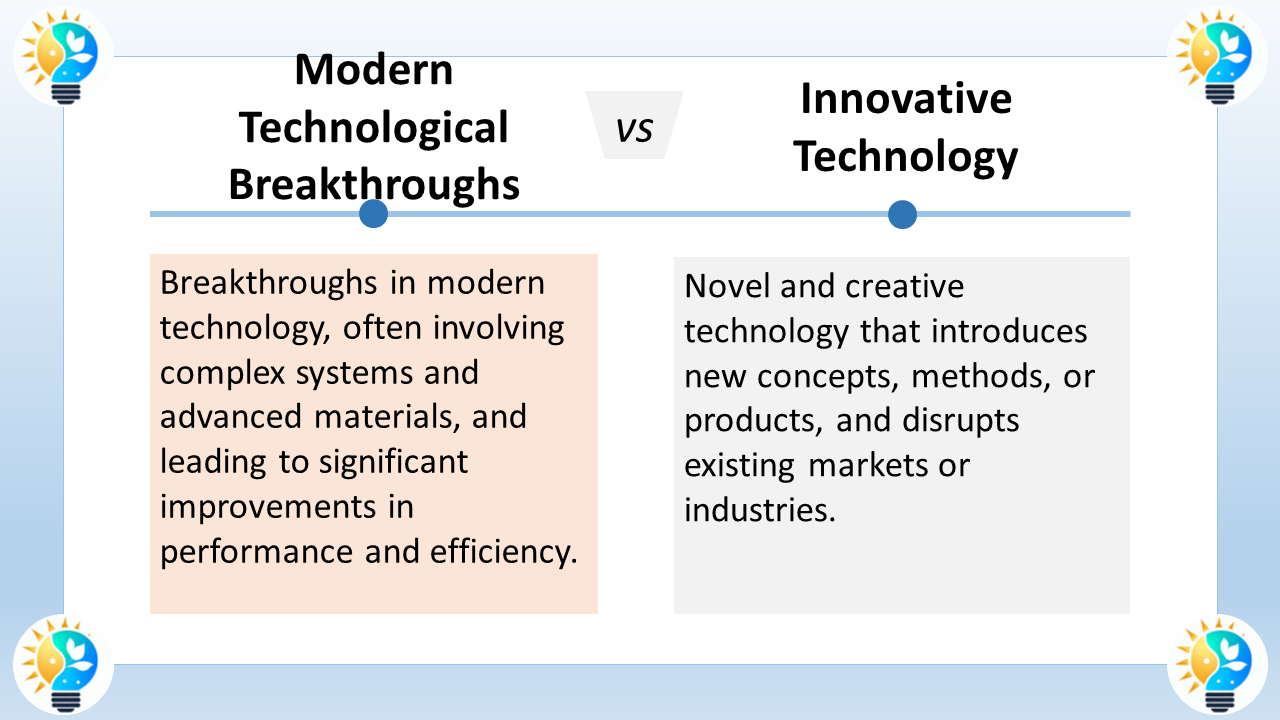“`html
technology vs. Technological: A Deep Dive
Technology vs. Technological: A Deep Dive
The words “technology” and “technological” are frequently used interchangeably, but they possess distinct meanings. While related, understanding their nuances is crucial for precise communication, especially in academic, professional, and technical contexts. This article aims to explore the differences between these terms, providing clarity and context for their proper usage.
Understanding “Technology”
The term “technology” is a noun, generally referring to the sum of techniques, skills, methods, and processes used in the production of goods or services or in the accomplishment of objectives, such as scientific investigation. It encompasses a broad spectrum of human endeavors, from the simplest tools to the most complex systems.
Key Aspects of “Technology”

Tools and Systems: Technology includes physical tools, machinery, and software systems. Examples include smartphones, computers, and industrial robots.
Processes and Methods: It also covers the methods and processes used to create and apply these tools. Examples include manufacturing processes, software development methodologies, and scientific research techniques.
Knowledge and Application: Technology represents the accumulated knowledge and practical application of scientific and other organized knowledge.
Evolutionary Nature: Technology is dynamic and constantly evolving, driven by innovation and discovery.
Broad Scope: It spans various sectors, including information technology, biotechnology, nanotechnology, and more.
In essence, “technology” is the tangible and intangible manifestation of human ingenuity, designed to solve problems and improve efficiency.
Understanding “Technological”
In contrast, “technological” is an adjective, describing something that is related to, involving, or resulting from technology. It qualifies nouns, indicating a connection to or dependence on technology.
Key Aspects of “Technological”

Adjectival Function: It modifies nouns, providing context about their relationship to technology.
Descriptive Quality: It describes attributes, processes, or changes that are influenced by or dependent on technology.
Contextual Usage: Its meaning is derived from the noun it modifies. For example, “technological advancement” refers to progress in technology.
Implication of Application: It often implies the practical application of technology.
Focus on Impact: It highlights the effects and implications of technology.
Essentially, “technological” signifies the characteristics or outcomes associated with the use and development of technology.
Distinguishing Between “Technology” and “Technological”
The primary distinction lies in their grammatical function: “technology” is a noun, while “technological” is an adjective. This difference dictates their usage and the information they convey.
Examples to Illustrate the Difference
Technology: “The rapid development of technology has transformed communication.” (Noun, referring to the field or body of knowledge and tools)
Technological: “We have witnessed significant technological advancements in recent years.” (Adjective, describing the type of advancements)
Technology: “Investing in renewable technology is crucial for environmental sustainability.” (Noun, referring to the specific tools and systems)
Technological: “The company’s success is attributed to its technological innovation.” (Adjective, describing the type of innovation)
In these examples, “technology” refers to the field or specific tools, while “technological” describes the qualities or effects associated with technology.
Common Misconceptions and Errors
One common error is using “technology” as an adjective. For example, saying “technology advancements” is incorrect; the correct phrase is “technological advancements.” Similarly, using “technological” as a noun is incorrect.
Avoiding Common Errors
Use “technological” to modify nouns: “Technological change,” “technological infrastructure,” “technological skills.”
Use “technology” as a noun: “Information technology,” “medical technology,” “the impact of technology.”
Check for grammatical context: Ensure the word fits the grammatical structure of the sentence.
Consult dictionaries and style guides: When in doubt, refer to reliable sources for clarification.
The Impact of Technology and Technological Change
Both “technology” and “technological” play vital roles in understanding the modern world. Technology provides the tools and methods that drive progress, while technological change describes the dynamic process of innovation and its effects.
Societal and Economic Impact
Economic Growth: Technological advancements drive productivity and economic growth.
Social Transformation: Technology transforms social interactions, communication, and access to information.
Environmental Impact: Technology can contribute to both environmental degradation and sustainability.
Healthcare Advancements: Technological innovation improves medical treatments and healthcare delivery.
Educational Transformation: Technology enhances learning and access to education.
The Role of Technological Innovation
Driving Progress: Technological innovation is essential for addressing global challenges.
Creating New Opportunities: It opens new markets and creates new jobs.
Improving Quality of Life: Technological advancements enhance living standards and quality of life.
Fostering Collaboration: Technology facilitates collaboration and knowledge sharing.
Enhancing Efficiency: It improves efficiency in various sectors, from manufacturing to services.
The Future of Technology and Technological Development
As technology continues to advance at an unprecedented pace, it is essential to understand the implications of technological change. The future will likely see further integration of technology into all aspects of life, with advancements in artificial intelligence, biotechnology, and other fields.
Emerging Technologies
Artificial Intelligence (AI): AI is transforming industries and creating new possibilities.
Biotechnology: Advances in biotechnology are revolutionizing medicine and agriculture.
Nanotechnology: Nanotechnology offers potential for new materials and applications.
Quantum Computing: Quantum computing promises to solve complex problems beyond the reach of classical computers.
Internet of Things (IoT): IoT is connecting devices and creating smart environments.
The Importance of Ethical Considerations
Addressing Bias: Ensuring AI and other technologies are free from bias.
Protecting Privacy: Safeguarding personal data in an increasingly connected world.
Ensuring Accessibility: Making technology accessible to all, regardless of socioeconomic status.
Mitigating Environmental Impact: Developing sustainable technologies to minimize environmental harm.
Promoting Responsible Innovation: Encouraging ethical development and deployment of new technologies.
Conclusion
Understanding the difference between “technology” and “technological” is crucial for precise communication. “Technology” refers to the tools, methods, and knowledge itself, while “technological” describes the qualities and effects associated with technology. By using these terms correctly, we can enhance clarity and accuracy in our discussions about the impact and future of technological advancements. As technology continues to evolve, a clear understanding of these terms will become even more important in navigating the complexities of our increasingly technological world.
“`



